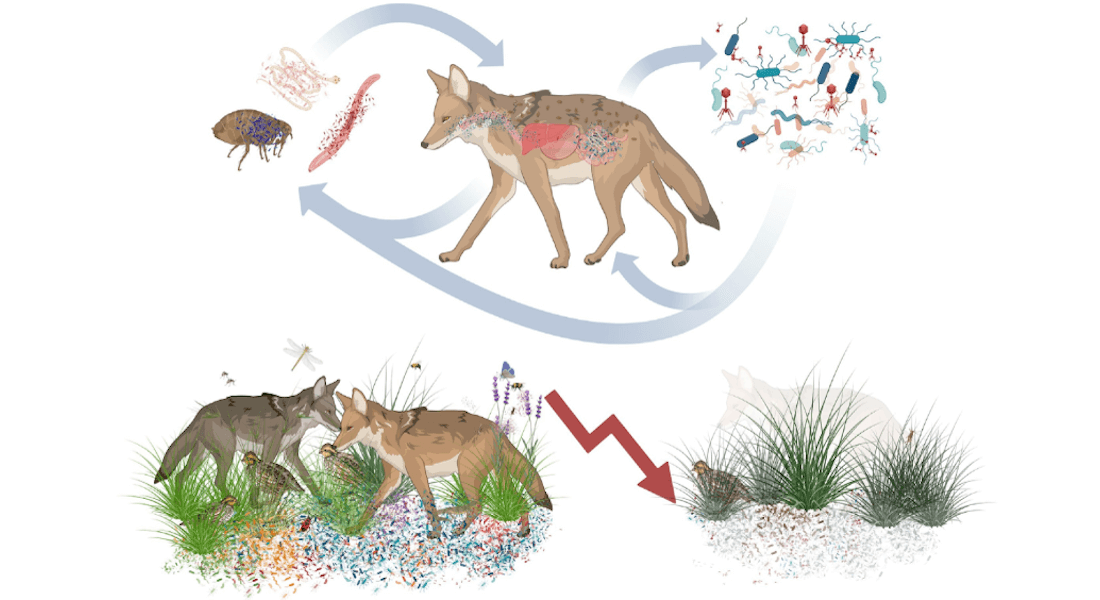Microorganisms - a key aspect in biodiversity loss
A new publication highlights a critical and often overlooked aspect of biodiversity loss: the decline of host-associated microorganisms. The research was published in Trends in Ecology & Evolution and underscores the importance of considering microorganisms in conservation efforts to ensure the resilience and survival of entire ecosystems.

The research introduces the concept of holobionts, which views organisms and their associated microorganisms as a single ecological unit. Lead author Morten Limborg and his colleagues Caroline Winther-Have, Naia Morueta-Holme, Tom Gilbert, and Jacob Aagerbo from Center for Evolutionary Hologenomics and the Center for Macroecology, Evolution, and Climate, Globe Institute, argue that current conservation strategies, which primarily focus on preserving individual species, fail to account for the vital microbial communities that live in and on these hosts.
Habitat destruction on more levels
One striking example discussed in the study is the endangered Baltic population of Atlantic salmon. These salmon are experiencing vitamin B1 deficiencies potentially linked to the absence of a specific Mycoplasma bacteria that naturally synthesises this essential nutrient. This case exemplifies how the loss of microbial symbionts can exacerbate the vulnerability of host species, making them more susceptible to environmental stresses and increasing their risk of extinction.
The study emphasises that habitat destruction not only leads to the loss of visible species but also diminishes the unique microbial habitats that animal and plant species provide. This dual loss can significantly reduce ecosystem resilience and hinder the adaptive potential of both hosts and their associated microbes.
Microbiome stewardship in conservation
To address this issue, the researchers propose integrating the holobiont concept into biodiversity management. They advocate for "microbiome stewardship," a strategy that includes preserving and reintroducing beneficial microbes, as well as mapping holobiont diversity to identify priority areas for conservation. By doing so, conservation efforts can maintain the intricate web of life that supports both host species and their microbial partners.
“This study highlights an urgent need to expand our conservation frameworks to include the microbial dimension of biodiversity,” Associate Professor Morten Limborg says. “Protecting microorganisms alongside their hosts is essential for the overall health and sustainability of ecosystems.”
In this interview with Science Magazine Morten Limborg and Caroline Winther-Have elaborate on why they think microbes are worthy of conservation.
A holistic approach
The authors call for increased research and the collection of long-term data on holobionts to better understand the full impact of biodiversity loss. "When host animals and plants lose diversity of beneficial microbes they become even more vulnerable towards the ultimate extinction threat" PhD student Caroline Winther-Have adds. By acknowledging and addressing the interconnectedness of species and their microbial communities, the study aims to enhance the effectiveness of conservation strategies and ensure the preservation of both visible and invisible life forms.
The findings serve as a crucial reminder to conservationists and policymakers that safeguarding biodiversity requires a holistic approach, recognising the essential roles that microorganisms play in maintaining the balance and functionality of ecosystems.
Read the article entitled “The overlooked biodiversity loss” online here.
Contact
Associate Professor Morten Limborg
PhD student Caroline Winther-Have
